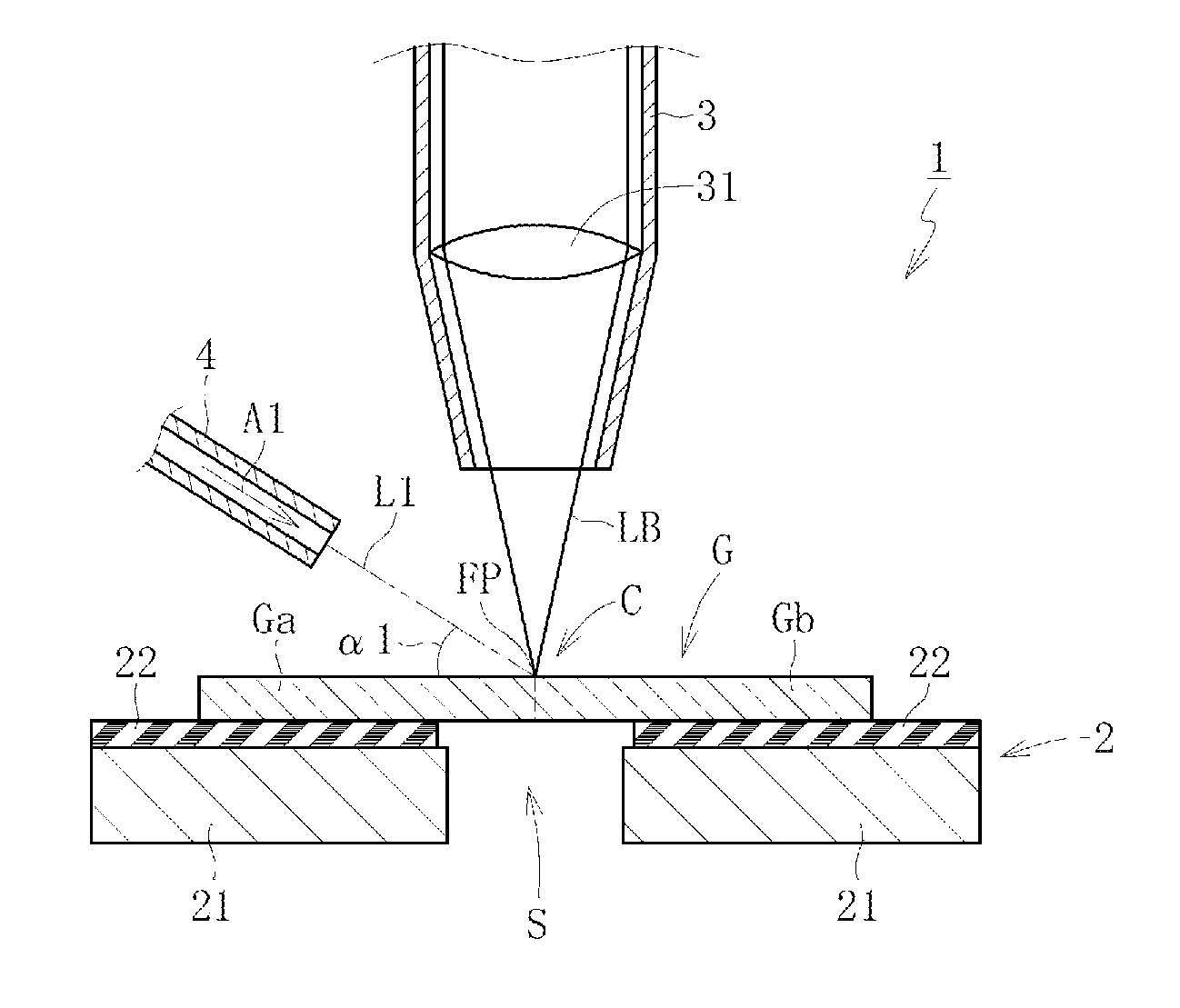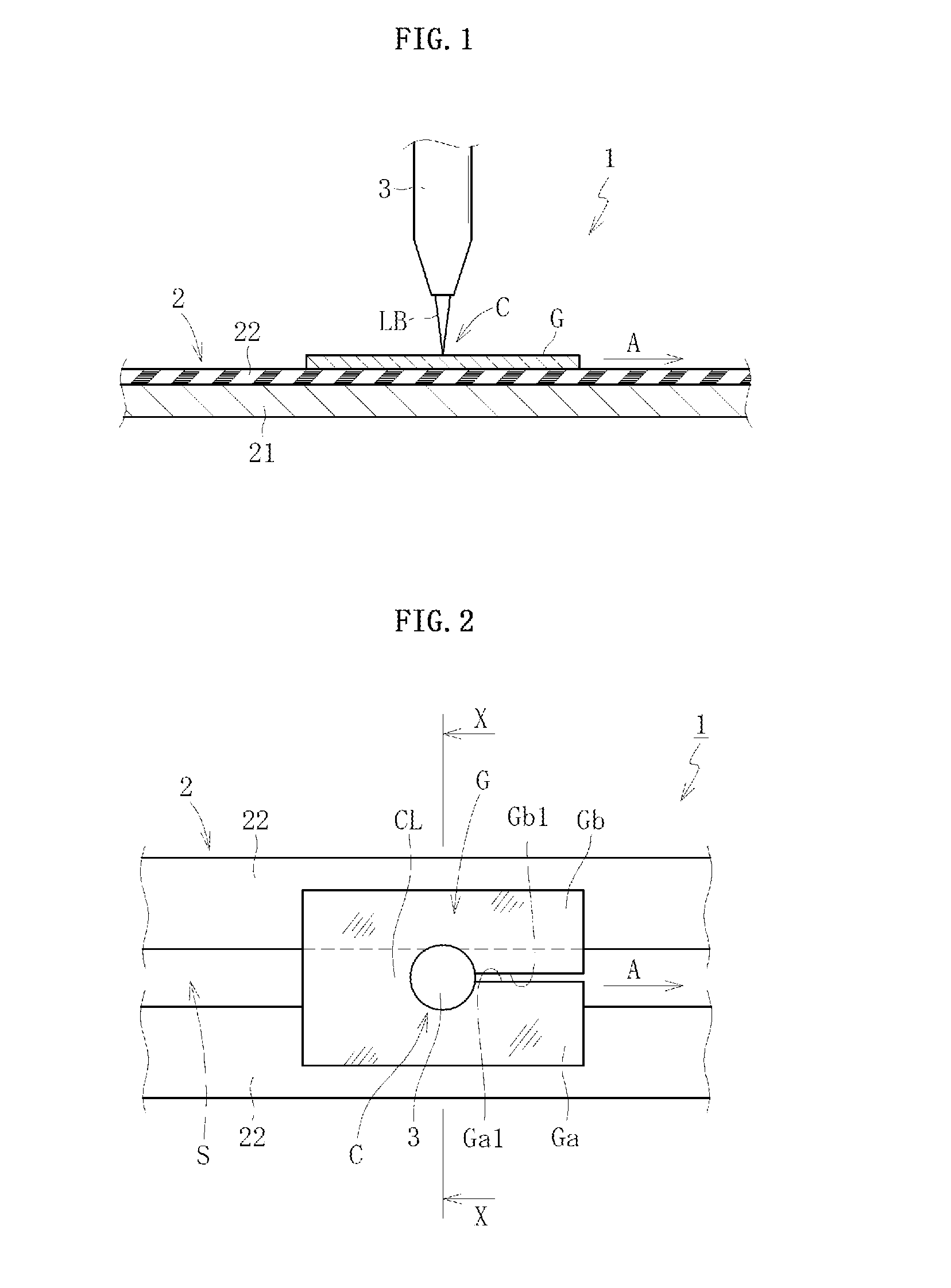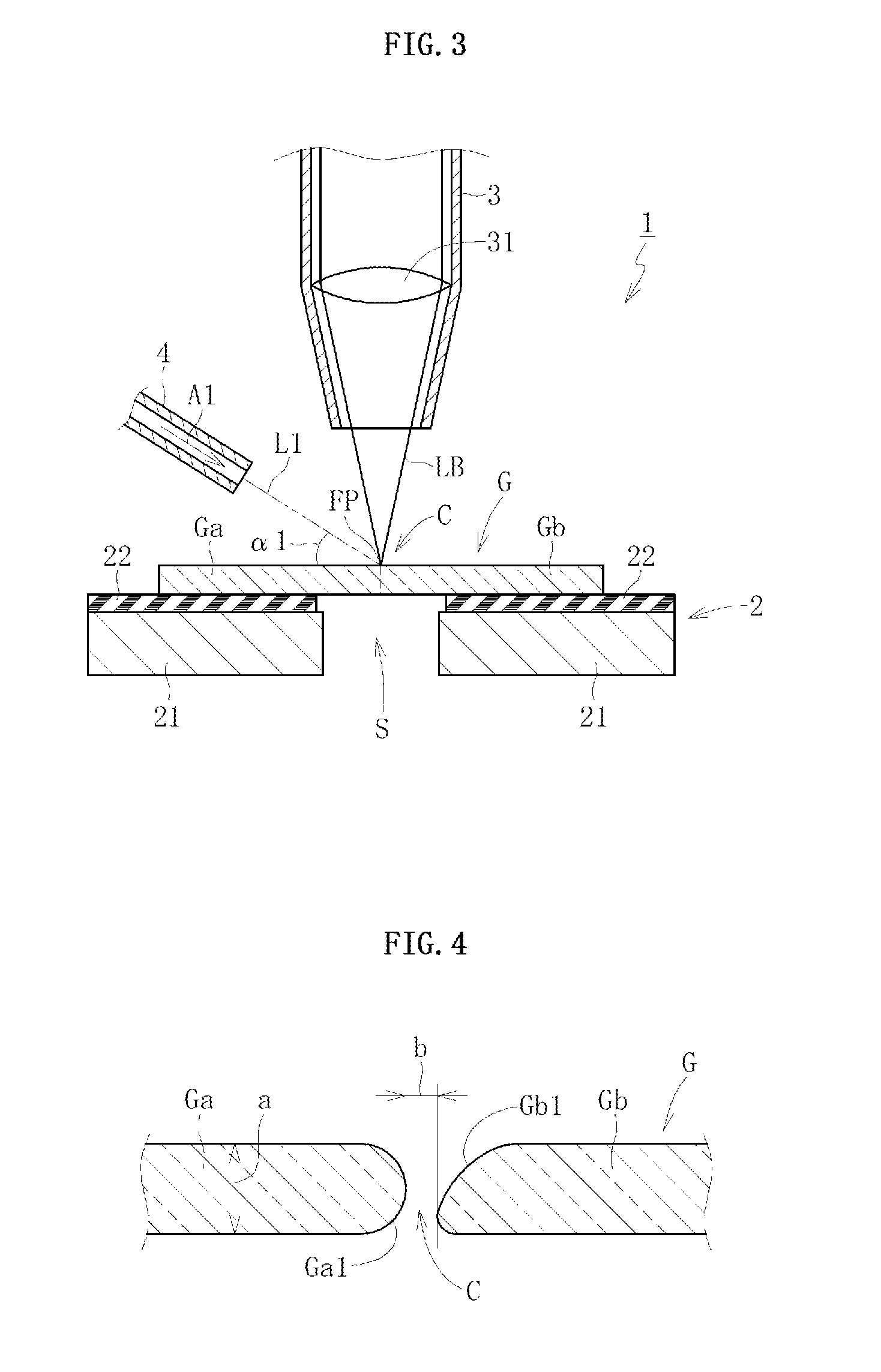Cutting method for glass sheet and glass sheet cutting apparatus
a cutting apparatus and glass sheet technology, applied in manufacturing tools, transportation and packaging, cellulosic plastic layered products, etc., can solve the problems of glass sheet breaking from cracks, factor of deterioration in the product quality of glass sheet, etc., to reduce risk, suppress force, and safe separation
- Summary
- Abstract
- Description
- Claims
- Application Information
AI Technical Summary
Benefits of technology
Problems solved by technology
Method used
Image
Examples
embodiments of first invention
[0113]In the following, description is made of the above-mentioned embodiment of the first invention with reference to the drawings. Note that, in the following, a glass sheet refers to a glass substrate for flat panel displays, which has a thickness 500 μm or less. As a matter of course, the glass sheet to be cut is not limited to the glass substrate for flat panel displays, and may be glass substrates utilized in various fields, such as a glass substrate for solar cell, OLED illumination devices, touch panels, and digital signages, and laminated bodies formed of such glass substrates and organic resins.
first embodiment
(1) First Embodiment
[0114]As illustrated in FIG. 1, a glass sheet cutting device 1 according to a first embodiment of the first invention comprises a support stage 2 for supporting from below a glass sheet G in a flat posture and a laser irradiator 3 for fusing and dividing the glass sheet G supported by the support stage 2.
[0115]The support stage 2 comprises a stage main body 21 and a conveyer 22 which moves along an upper surface of the stage main body 21. The glass sheet G is conveyed downstream in a conveying direction (arrow A direction in FIG. 1) along a preset cutting line CL by movement of the conveyer 22. In this case, the stage main body 21 functions to guide the conveyer 22. Note that, the conveyer 22 comprises a large number of vents (not shown), and the glass sheet G is conveyed while being held on the conveyer 22 by attraction through intermediation of those vents. As a matter of course, there may be employed other conveying methods such as a method of conveying the gl...
second embodiment
(2) Second Embodiment
[0143]As illustrated in FIG. 5, the glass sheet cutting device 1 according to a second embodiment of the first invention is obtained by adding a center assist gas jet nozzle 5 to the structure of the glass sheet cutting device 1 according to the first embodiment. In the following, description is made only of differences while omitting description of common features.
[0144]The center assist gas jet nozzle 5 is connected to a distal end portion of the laser irradiator 3, and supplies a center assist gas A2 into the interior space of the laser irradiator 3 (space below the lens 31). The center assist gas A2 supplied into the interior space of the laser irradiator 3 is jetted just below from a distal end of the laser irradiator 3 to the cutting portion C of the glass sheet G. In other words, from the distal end of the laser irradiator 3, the laser beam LB is emitted and the center assist gas A2 is jetted. The center assist gas A2 has functions to remove the molten fo...
PUM
| Property | Measurement | Unit |
|---|---|---|
| thickness | aaaaa | aaaaa |
| roughness | aaaaa | aaaaa |
| arithmetic mean roughness | aaaaa | aaaaa |
Abstract
Description
Claims
Application Information
 Login to View More
Login to View More - R&D
- Intellectual Property
- Life Sciences
- Materials
- Tech Scout
- Unparalleled Data Quality
- Higher Quality Content
- 60% Fewer Hallucinations
Browse by: Latest US Patents, China's latest patents, Technical Efficacy Thesaurus, Application Domain, Technology Topic, Popular Technical Reports.
© 2025 PatSnap. All rights reserved.Legal|Privacy policy|Modern Slavery Act Transparency Statement|Sitemap|About US| Contact US: help@patsnap.com



